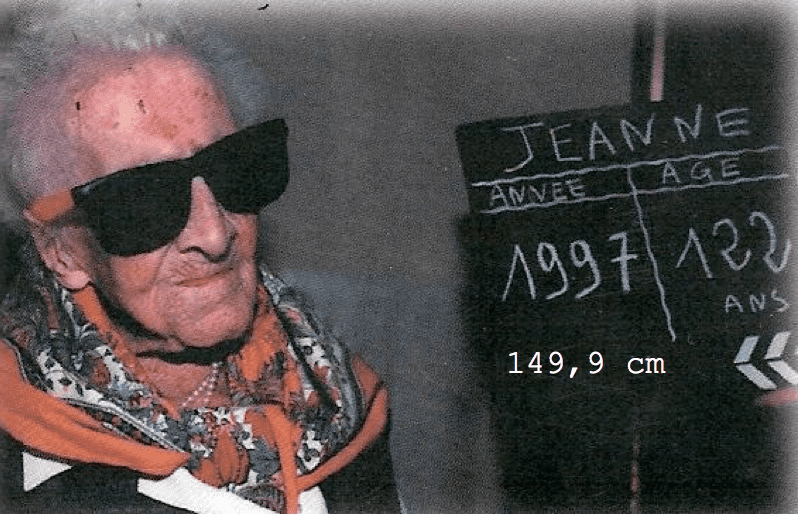
If there’s a biological limit to how long humans can live, we haven’t reached it yet. This is the conclusion of a recent study of people aged over 105, finding that their risk of death slows and even plateaus past this age. According to the study, if individuals can live past very perilous ages (their 70s, 80s, and 90s), they can hope to live well into their 110s.
The oldest human being ever hasn’t been born yet
The longest a human has ever lived — that we know of — is 122, a record set by a Frenchwoman called Jeanne Calment. She died 21 years ago, and no one has grown older since.
In 2016, a study performed by researchers at the Albert Einstein College of Medicine in the Bronx analyzed data from the Human Mortality Database, which included data such as when these individuals became deceased, from over 40 countries. The researchers found that since 1900, the survival rate of people 70 years and older had steadily increased with their year of birth. However, this didn’t occur for people aged 100 years and older, suggesting a possible limit to lifespan. Specifically, the authors argued that the biological limit of human beings is 115, simply making Calment an outlier.
This study started a lively debate among scholars, many arguing that the conclusions were based on flawed statistical methods. Although, to be fair, any study attempting to assess the limits of human longevity is challenging by virtue of the nature of its object of inquiry. First of all, there aren’t that many people who are 100 or older, which makes conclusions difficult to draw given the sample size. Secondly, people born in 1900 or around the time often can’t definitely prove their date of birth, as not all countries accurately recorded information about their citizens at the time.
“The statistics aren’t good enough to be able to say you can’t live much longer than that, based on the data we have,” said report author Siegfried Hekimi, chairman of developmental biology at McGill University in Montreal. “It’s simply not good enough to make that claim.”
Kenneth Wachter, a professor of demography and statistics at the University of California, Berkeley, and colleagues came to a totally different conclusion from the 2016 study. They tracked the death trajectories of nearly 4,000 Italian residents who reached age 105 between 2009 and 2015. Over 87% of these people were women and during the time period, 2,880 deaths had occurred.
The researchers found that the odds of survival decline rapidly as a person enters middle and old age. For instance, Italian women who reached 90 had a 15% chance of dying within the year and could expect to live another six years, on average. If they made it 95, however, the odds of dying within the year increased to 24% and life expectancy dropped to 3.7 years.
This would logically suggest that for every aged year, the odds of dying within the year increase more and more. But that’s not what happened — once they hit 105, the chance of surviving hit a plateau of 50% each year, the researchers reported in the journal Science.
“If mortality rates kept rising at the rates they rise from age 40 to age 90, then there would be a strong barrier to progress at extreme ages—great diminishing returns to behavioral change or to new medical advances,” Wachter said. “The fact these rates ultimately level out gives hope there’s more leeway for those advances.”
“The risk of death is very high at 105 years, but next year it’s not higher,” Hekimi commented about the new study. “Every year you have the same chance of dying, and every year you can be the one who wins the coin toss.”
Wachter says that the plateau is likely due to the influence of genes but also healthy life choices. However, there is no clear-cut genetics that enable people to reach ripe old ages. For instance, genes that seem to be supporting extended lifespan on Okinawa are not the same as ones found in England.
“When you look at a group of older people who are all the same age, some are already quite frail and some are robust. There’s a big difference in the level of frailty,” Wachter said.
“People who go to college 50th reunions, you just look around you and some people are climbing mountains while some people are walking with canes. Now go 15 to 20 years later, the people who were already frail are the ones who are likely to have died,” he said.
The present study suggests that it is possible to extend the survival plateau earlier into the average human lifespan, thus making it likelier for more people to survive into their 100s. Imagine that those people who are 115 today were born in a time when they didn’t have access to modern healthcare and nutritional information. It’s extremely likely that the people who will eventually reach the peak of human lifespan haven’t’ been born yet.
“It gives us a good piece of hope, because there is now lots of opportunity to look at these bad variants as they are in populations today and to try to understand the interaction of those genetic variants with potential medicines and different health challenges,” Wachter said.
“This basic theory could help us inform medical progress and public health progress 10 to 15 years from now as genetic research continues,” he said.






